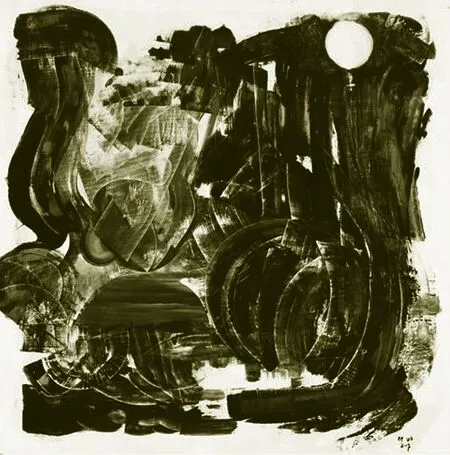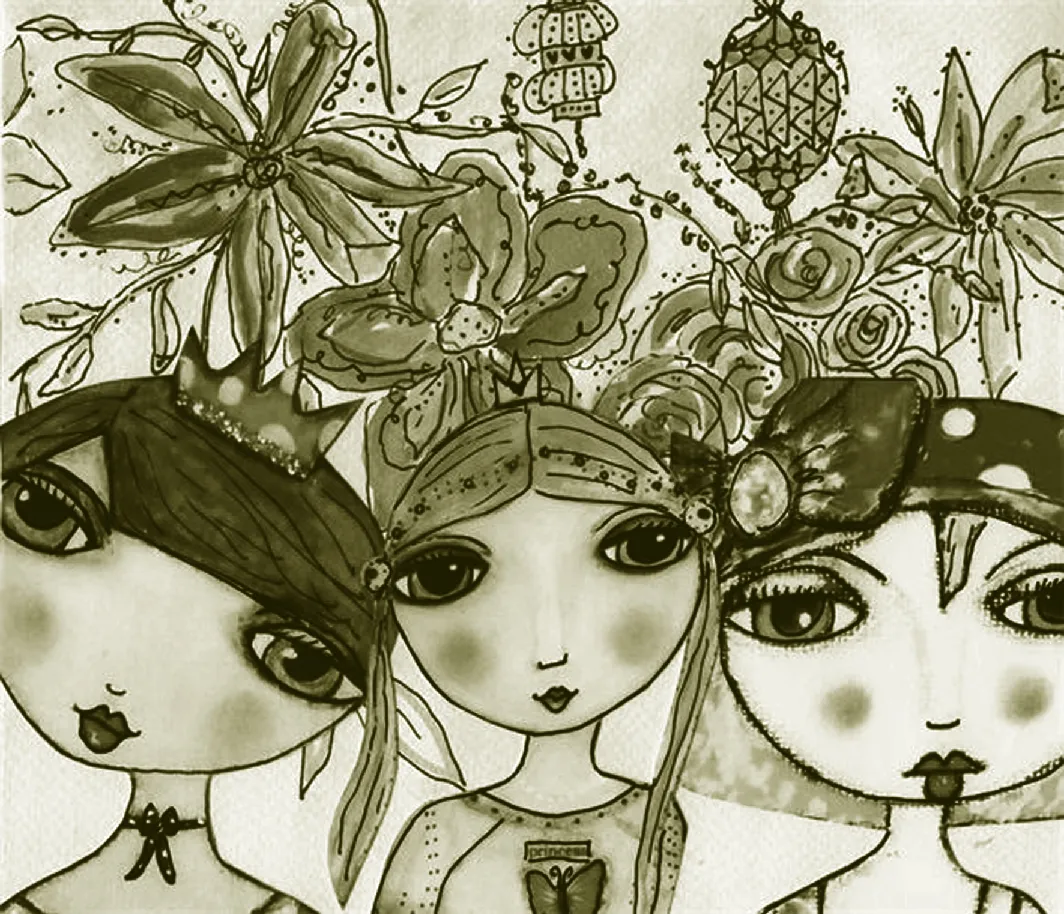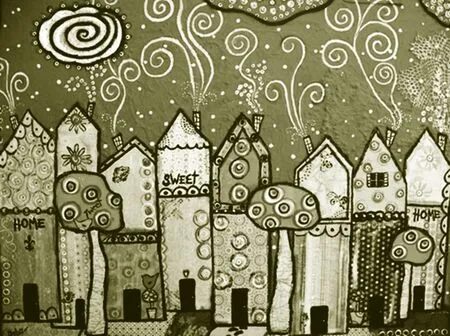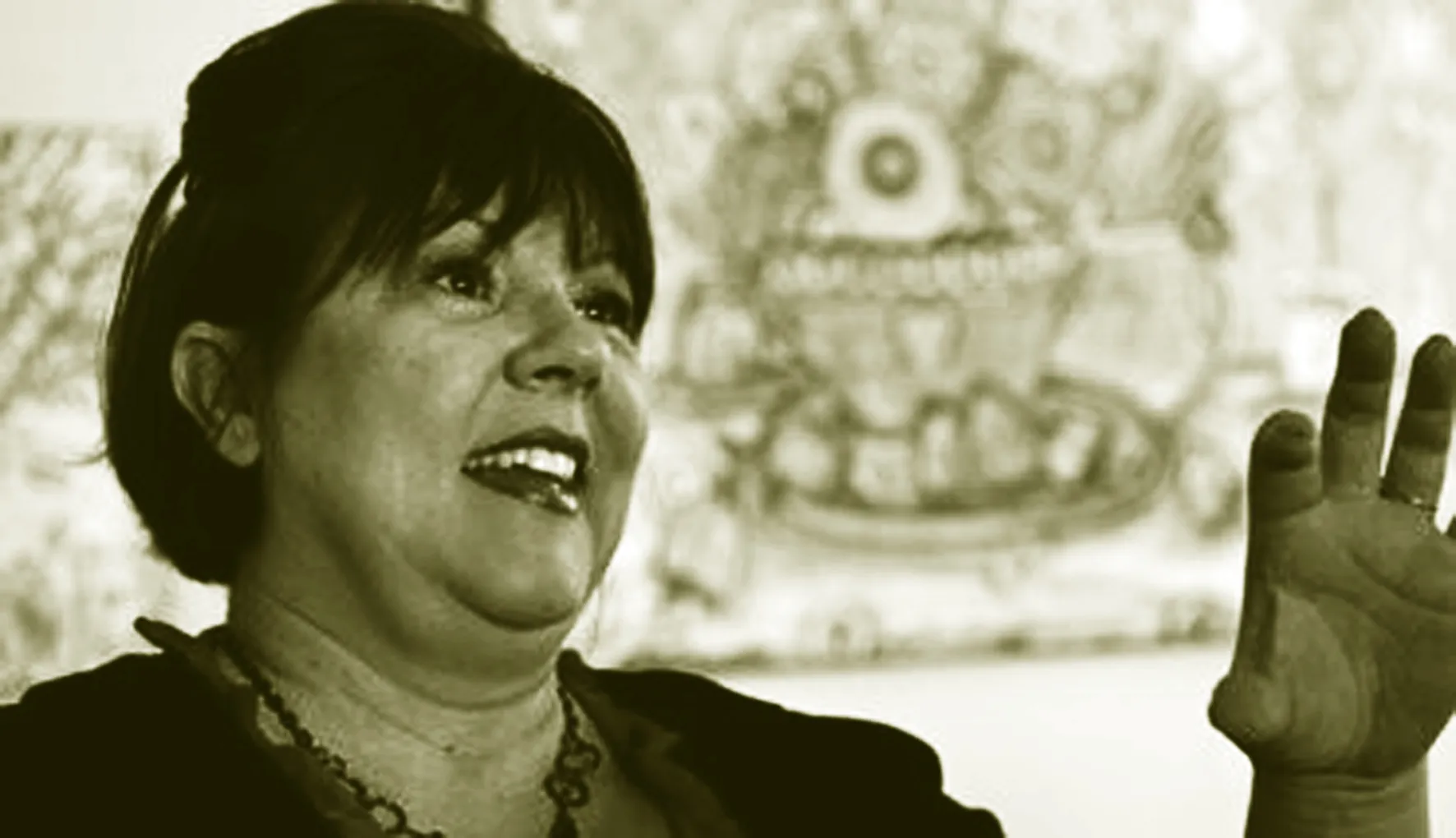The Most Dangerous Muse
By Eliza Strickland
研究发现,一些帕金森症患者会变身为艺术家,他们表现在艺术创作中的才能令人吃惊,而之前多数人都很少接触艺术。医学专家认为,与多巴胺相关的帕金森症治疗用药在其中起了关键作用,它可以将某些患者潜在的艺术创作天分激活。一些帕金森症患者很享受投身于艺术创作的生活,在艺术创作中,他们更加关注内心生活和外部世界,由此开启了人生幸福的新篇章。
Tsipi Shaish, a 59-year-old grandmother, knows exactly when she became an artist: when she was diagnosed with Parkinson’s disease in 2006.1. be diagnosed with: 被诊断出;Parkinson’s disease: 帕金森症(PD),又名震颤麻痹,是一种影响患者活动能力的中枢神经系统慢性疾病,多发生于中老年人群,为最常见的神经退行性疾病之一。Before her trembling hands brought her to a neurologist,2. trembling: 颤抖的,哆嗦的;neurologist: 神经科医生。she had lived “a routine life,” she says. She worked a boring job at an insurance company for 25 years and focused on raising her two kids. She never took art lessons, and beyond the occasional museum visit,3. beyond: 除了;occasional: 偶尔的。never gave any thought to art. Now she talks proudly of her own paintings that have hung in Paris and New York City galleries4. gallery: 美术馆,画廊。.
“I go to the canvas because I feel curious, I feel an uncontrollable urge,”5. canvas: 画布;uncontrollable: 无法控制的;urge: 强烈的欲望。she says. She chooses materials and paint colors in a haze of intuition, letting her hands apply strong swathes of color to create vivid abstracts.6. 直觉让她选择了画布和颜料,用自己的双手将大量浓烈色彩融合成生动的抽象画。a haze of: 一阵;intuition: 直觉;swathes of: 大量(某物);vivid: 生动的; abstract: 抽象事物。“If you ask me, ‘Why did you do this and not that?’ I wouldn’t be able to answer, because I don’t know it rationally7. rationally: 理性地,合理地。,” Shaish says.Her creative impulses are an integral part of a new version of herself that only came into being after her diagnosis.8. 她的创作冲动使她展现出全新的自我,而这种冲动是在她确诊患病以后才出现的。impulse:冲动;integral: 构成整体所必需的;come into being: 形成,出现。“I’m more alive than I was 10 years ago,” she says.
Shaish is part of a subset of people with Parkinson’s disease who experience an urgent flowering of creativity even as their brain cells die and their bodies decline due to the neurodegenerative disease.9.Shaish和其他一些帕金森症患者一样,尽管脑细胞开始死亡,身体由于神经退行性疾病每况愈下,但他们正经历着一场强烈的创作高潮。a subset of: 一部分;flowering: 高潮,盛期;decline: 衰退;due to: 由于,归因于;neurodegenerative: 神经变性的。Patients with no prior history of artistic proclivities begin to draw, paint, sculpt, and write poetry.10. prior: 先前的,之前的;proclivity: 倾向,癖性;sculpt: 雕刻。In recent years case studies have shown the brains of the Parkinson’s patients are being reshaped by their disease and medications.11. reshape: 重塑,改造;medication: 药物治疗。Like most Parkinson’s patients, Shaish takes drugs that rebalance the brain’s dopamine system, involved in movement and motivation.12. rebalance: 调整;dopamine: 多巴胺,一种脑内分泌物,属于神经递质,可影响一个人的情绪; motivation: 积极性,兴趣。There is a light side and a dark side to these neural changes. While some patients produce inspirational art, others get locked in destructive addictions.13. inspirational: 带有灵感的;destructive: 毁灭性的;addiction: 成瘾。But drugs aren’t the only explanation.
Cindy DeLuz of northern California had worked as an esthetician before her diagnosis and had no history of making art;when she felt the sudden urge to paint, she had to drive to a fiveand-dime store to buy a watercolor set.14. esthetician: 美学家;five-and-dime store: 廉价品商店;watercolor: 水彩,水彩颜料。Within weeks she was painting obsessively, sometimes for 48 hours at a stretch.15. obsessively: 着迷地;at a stretch: 一口气儿,连续不歇。“My husband finally put a lock on the art room door,” she remembers with a laugh.

Such levels of compulsion ring alarm bells for clinicians who take care of Parkinson’s patients.16. compulsion: (尤指难以克制的)强烈欲望,冲动;clinician: 临床医生。In the early 2000s, doctors realized that a small number of their patients responded to the dopamine-related medications by compulsively seeking rewards, often in ways that screwed up their lives.17. 21世纪初期,医生意识到,一小部分患者服用与多巴胺相关的药物后会产生强烈的追求回报的冲动,这经常会毁掉他们的生活。screw up: 毁坏,搞砸。Some patients lost their savings through compulsive gambling,others became hypersexual18. hypersexual: 纵欲过度的。and destroyed their marriages, and some just wanted more and more of their medication. By 2005 researchers had classified these behaviors as dopamine dysregulation syndrome19. dopamine dysregulation syndrome: 多巴胺失调综合症。.
Anjan Chatterjee, chair of neurology at Pennsylvania Hospital, has seen cases of Parkinson’s patients who have engaged in these disruptive behaviors, and has also studied a patient who painted obsessively. He believes the two phenomena20. phenomena: 现象,phenomenon的复数形式。are linked. “There may be something in this constellation of21. a constellation of sth.: 一群相似的事物(或人)。symptoms where people have a certain amount of impulsiveness and risk taking behavior that gets expressed through art,”Chatterjee says. He says his artistic patient would get up at four in the morning to paint. “Our patient would pick themes and keep working them and working them,” he says. “There was a ritualistic component.”22. ritualistic: 固定的,惯例的;component:组成部分。
Chatterjee notes that creativity is often conceived23. conceive: 以为,认为。as a four-stage process. In the first preparatory step the artist acquires skills and gathers material; in the second “incubation” stage ideas swirl around the subconscious brain; third comes that wonderful moment of illumination where disconnected thoughts meld together in an exciting new way.24.在第一步的准备阶段,画家首先获得技能,收集材料;在第二步的“酝酿”阶段,各种想法在大脑潜意识中来回涌动;第三阶段迎来美妙的启发时刻,零散的想法以一种令人兴奋的全新方式融合到一起。preparatory: 准备的;acquire: 取得;incubation: 酝酿;swirl: 打旋;subconscious: 潜在意识的;illumination: 启发;disconnected:分散的,不连贯的。Finally, in the fourth stage, the artist makes a conscious and deliberate25. deliberate: 深思熟虑的。effort and gets the work done.


Cindy DeLuz作品

Cindy DeLuz
People living with Parkinson’s would no doubt say that getting a neurodegenerative disease is not a great way to summon26. summon: 召集。the muse. But they are not questioning the muse, only following her.
When she picks up her brush, Shaish says, she doesn’t know where she’s going. She recounts27. recount: 叙述。a winter’s night in 2007. One year after her Parkinson’s diagnosis, her husband was diagnosed with cancer, and had to stay in the hospital for rounds of chemotherapy.28. round: 周期;chemotherapy: 化疗。On her husband’s first night in the hospital, Shaish came home to a dark and empty house—her kids were grown and gone, so she was alone. She took up a big blank canvas and started reaching for the paints. She mixed dark colors: blacks,browns, purples, greens. She painted without a plan or an image in her head. “But when I finished and I sat down and looked at the painting, I knew exactly what it meant to me,” she says.
Shaish says the painting is like a Tarot card29. Tarot card: 塔罗牌,是西方古老的占卜工具。that her brain dealt her.“It’s as if my subconscious created this card for me and gave me strength and inspiration, told me how to cope, how to look at my life.” Shaish still struggles with her disease. She takes medications four times a day, and deals with tremors and muscles that sometimes go stiff and rigid.30. tremor: 震颤,颤动;stiff: 僵硬的,活动时疼痛的;rigid: 僵硬的。In the morning, she has trouble getting moving. Still, Shaish sees her condition as a gift. “It has made me attentive31. attentive: 留心的,注意的。to my intuition,” she says. “I believe we all have the answers within us. If you really listen to yourself, if you pick up the right things, then you know the answers.”

